Why Meteorologists Use Historical Weather Data To Make Forecasts – And The Importance For Your Home Weather Station To Do The Same
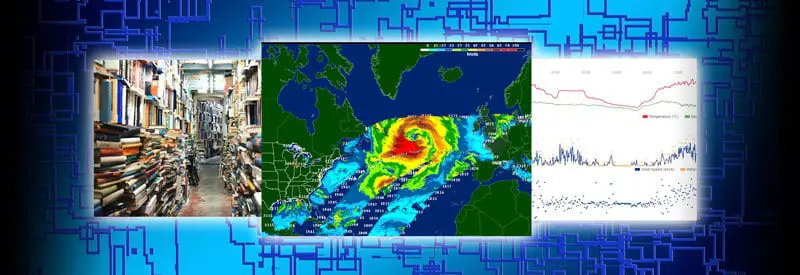
At some point, we all blamed the Weather Service when the weather didn't turn out exactly as predicted. Yet, it is because of increasingly accurate, modern weather forecasts that we rely so much on them.
Historical weather data primarily provides meteorologists with an accurate overview of general weather conditions experienced by a region in the past. Combined with current atmospheric conditions gathered from an array of remote and local sensors, it allows them to make more accurate forecasts.
We have to recognize and admit the irony in our thinking (and sometimes irrational emotional reaction) when it comes to weather forecasts.
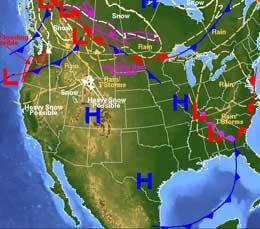
If weather forecasting weren't becoming so reliable and accurate over the past couple of years, we simply would not have the ability to plan and execute so many outdoor events with such a great amount of confidence.
This includes international sporting events, political rallies, and music concerts. Or it can simply be a fun day out with your family or partner. And the weather reacts as predicted almost ninety percent of the time.
The high accuracy with which meteorologists are able to predict weather events is a result of vastly improved technology and better forecast models. The most important one that is the focus of this article, though, is historical weather data.
What Is Historical Weather Data?
Before we can go into the details of historical data and why it is so important, we need to understand exactly what it is.

Historical Weather Data is a database of the past weather conditions in a particular region. This record can include multiple weather variables such as temperature, rainfall, wind direction and speed, humidity, and barometric pressure.
Historical weather data can be as recent as weather information from a week ago. However, it usually stretches back years, decades, and even centuries. The longer and the more detailed the record is, the more valuable it is to the meteorologist.
In the field of meteorology, this historical weather data is crucial not just for understanding current weather conditions but also to assist with the prediction of future weather conditions and events (weather forecasts).
But for those of us with our own personal weather stations, gathering historical data is just as important to help us understand and forecast the weather specificity region. (More on that a little later.)
To best understand its true value, we need to understand how meteorologists go about calculating and predicting weather conditions.
how do meteorologists predict the weather
Climatologists and meteorologists use a combination of data, advanced computing power, and complex forecast models to calculate and make weather predictions.
It will make the most sense if we look at each of the individual forecasting steps on their own to understand the process as a whole.
Data Gathering
Meteorologists use a multitude of readings from sensors and devices around the planet to collect weather data. This includes sensors on the ground, in the ocean & air, and also space to collect the data needed for them to make important decisions and accurate forecasts.
Land-based radar systems, remote weather stations, ocean buoys, weather balloons, and satellites are just a few examples of sources of data that are all captured and processed by a weather service.
(There is quite a bit of confusion as to what exactly a weather balloon is and what role it plays in the gathering of meteorological data. You can get an in-depth explanation in this article.)
One of the most important sources of data, however, is the vast record of historical weather data that is essential to use as a source of reference. Without it, it would be impossible to make use of forecasting models that need a record of past weather events to calculate future weather conditions accurately.
Processing Through Raw Computing Power
Over a million sensor readings are gathered across the planet every day. Combined with the mountains of historical data, weather services need some serious computing power to process this volume of data.
There is no way one single computer, no matter how powerful, can even begin to process even a fraction of this data.
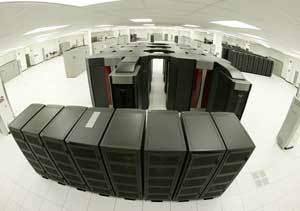
Example Of The Sheer Size And Scope Of A Cray Supercomputer
To give you an indication of the size and power needed to process all this data, the ECMWF (European Centre for Medium-Range Weather Forecasts) uses a Cray supercomputer to store and process its data.
It weighs more than 50 metric tons and spans over multiple air-conditioned hallways. And it can process data at multiple petaflops!
(A petaflop is the name given to a speed of one thousand million million instructions per second.)
That is the amount of computing power needed to handle the sheer amount of data. And the ones we have today are still not powerful enough to entirely make use of the forecasting models meteorologists are currently using and constantly improving upon.
A large section of these supercomputers and data storage systems are dedicated to just storing and processing the historical weather data.
But how do these supercomputers even know how to handle all this data thrown at them?
Weather Forecasting Models
Numerical weather prediction (NWP) has been extensively used since the development of the computer during the last century, which made the processing of all gathered weather data possible.
These numerical forecast equations used to calculate weather and climate are called weather forecasting models.
There are numerous forecasting models for different types of weather events. Two global weather forecasting models are generally regarded to be the most accurate and trusted models relied upon by meteorologists and climatologists.
- The ECMWF (European Centre for Medium-Range Weather Forecasts) use what is more commonly known as the European Weather Forecasting Model.
- The GFS (American Global Forecasting System) use what is more commonly known as the American Weather Forecasting Model.
Both models are very accurate and highly regarded by the global meteorological society, but each one has its own unique weather forecasting methods.
The calculated results from these forecasting models are normally the final step in the whole forecasting process.
The Importance For Your Home Weather Station To Record And Store Weather Data
This brings us to the section where I really want to drive home a very important point to all home weather station owners.
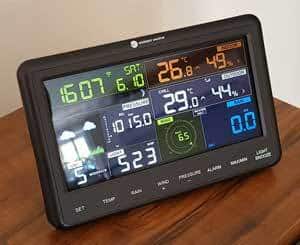
Make sure your home/personal weather station can record and store all the weather data its various sensors capture!
Throughout this article, I made it very clear why historical weather data is so important in not just observing and understanding current weather, but especially for predicting future weather conditions.
Just remember, the weather is unique in your area where your weather station is situated. Even if you have access to local and regional historical data, it is almost guaranteed that your home/neighborhood will have its own micro-climate.
In order for you to be able to make any kind of accurate weather prediction, you will need a historical record of conditions in your location. You need to know what the weather was like in the past under similar circumstances and how it reacted and changed.
This is why it is so crucial that you start to keep a record of your readings as soon as your weather station is up and running. And make offline backups of your weather records!
(Don't make the mistake I made. I kept all records online until a chain of events caused me to lose all my connections. This resulted in me having to reset my router, my Ambient Weather station, and re-register as a new user with a new weather station.
This little mishap caused me to lose the first four months of weather data. Now I am already four months behind with my historical data buildup.)
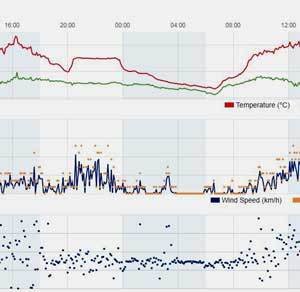
The vast majority of professional weather stations for home use come with WiFi connectivity built-in. They are also ready to be integrated into popular online services like Wunderground (Weather Underground).
Manufacturers like Ambient Weather created their own online service, which lets your console connect to their network. This displays a personal dashboard on your device with real-time readings from your weather station.
It also keeps a database that records all your weather station's readings and displays each weather variable on highly customizable graphs. (With the option to export all your data in a separate file, which I highly recommend.)
(If you are interested, you can read more about my experience with my Ambient Weather WS-2902A Osprey, especially the WiFi setup and integration in this article.)
This is just one example of how a fully connected and well set-up weather station can make building up a historical weather record relatively painless. Most manufacturers have their own online systems that work just as well.
This is the reason why I am so critical of high-end weather stations that don't offer these features. (Or sell it as an optional extra.) They can really do better.
My advice to you simple. I urge you to invest in a weather station that can record and build up a database of historical weather data and use it! (And remember to make offline backups.)
Conclusion
I don't think there is too much to summarize, as I have made my point over and over throughout this article.
By now, you should not be under any illusion as to how important a database of historical weather data is for accurate forecasting. So is the importance of choosing a personal weather station that enables you to do just that.
I hope you found this article helpful and reminded you to pay attention to an often overlooked but essential part of meteorology.
Never miss out again when another interesting and helpful article is released and stay updated, while also receiving helpful tips & information by simply following this link .
Until next time, keep your eye on the weather!
